As the demand for blockchain technology and decentralized storage continues to grow, Arweave is expected to become a leader in this field in the future.
Author: Chain Teahouse
1. Project Introduction
Arweave is a decentralized data storage solution that provides permanent and immutable data storage services through its Blockweave technology and native cryptocurrency AR token. Users can pay a one-time fee to permanently store data and earn rewards by contributing unused storage space.
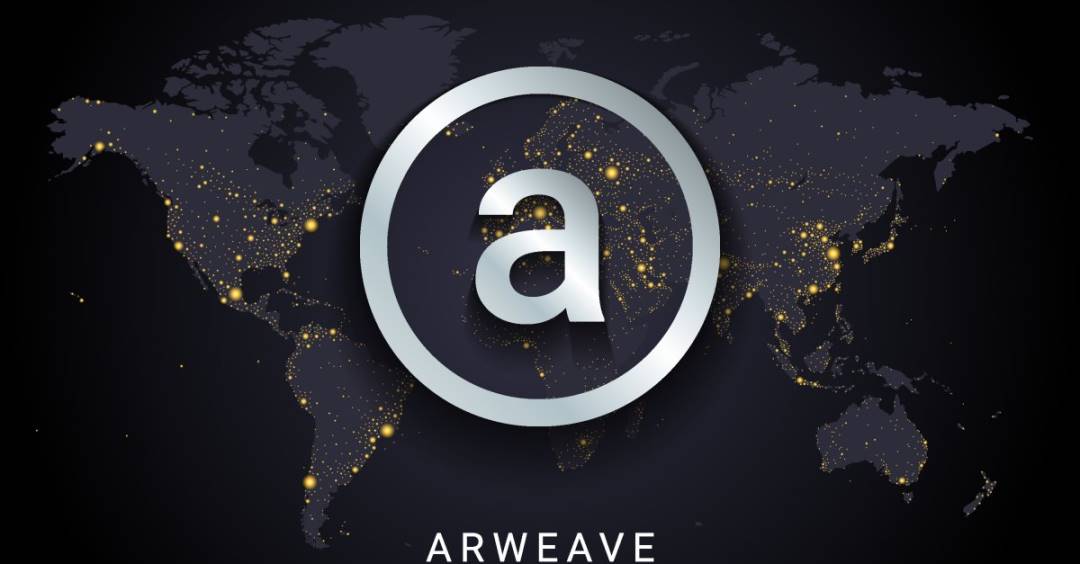
As a tool to help anyone permanently store data, Arweave works by distributing information in a computer network called nodes or miners. This is different from the traditional internet, which is controlled by servers of a few companies that may crash or quietly alter content at any time.
Arweave provides services for a parallel internet (called Permaweb) through a wide network of nodes. All these nodes earn money by providing long-term data storage and storing new data according to customer requests. Arweave uses its native cryptocurrency AR to operate the service. When people spend tokens to store data, they pay AR to miners and store a portion of AR in a donation fund to ensure unlimited permanent storage.
2. Working Principle
Arweave operates through an innovative data structure called Blockweave, which links each block to the previous block and a historical block (recall block). Miners must provide Proof of Access (PoA) before adding new blocks to ensure the integrity and immutability of all data. Users only need to pay a one-time fee for permanent data storage, with part of the fee covering initial storage costs and the other part going into a donation fund for future storage costs. The succinct proof of random access (Spora) further enhances the efficiency and security of the network. Bundling technology improves data upload efficiency and network performance by combining multiple transactions into a single large transaction. Through these mechanisms, Arweave has achieved a decentralized, permanent data storage network.
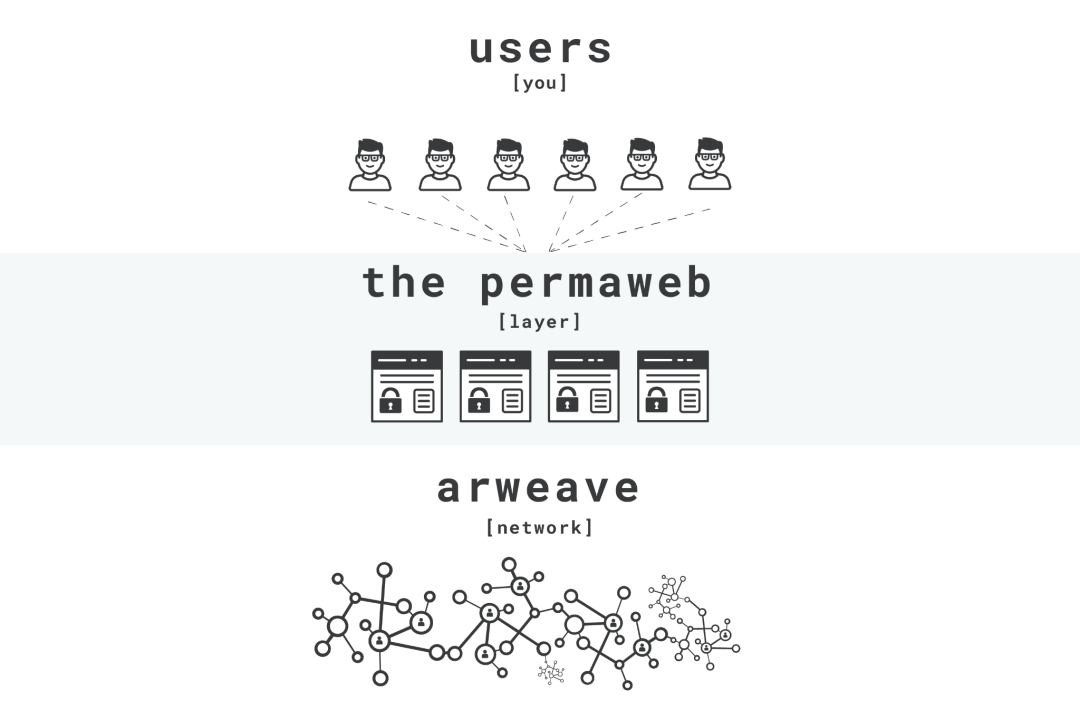
3. Core Mechanism
3.1 Blockweave
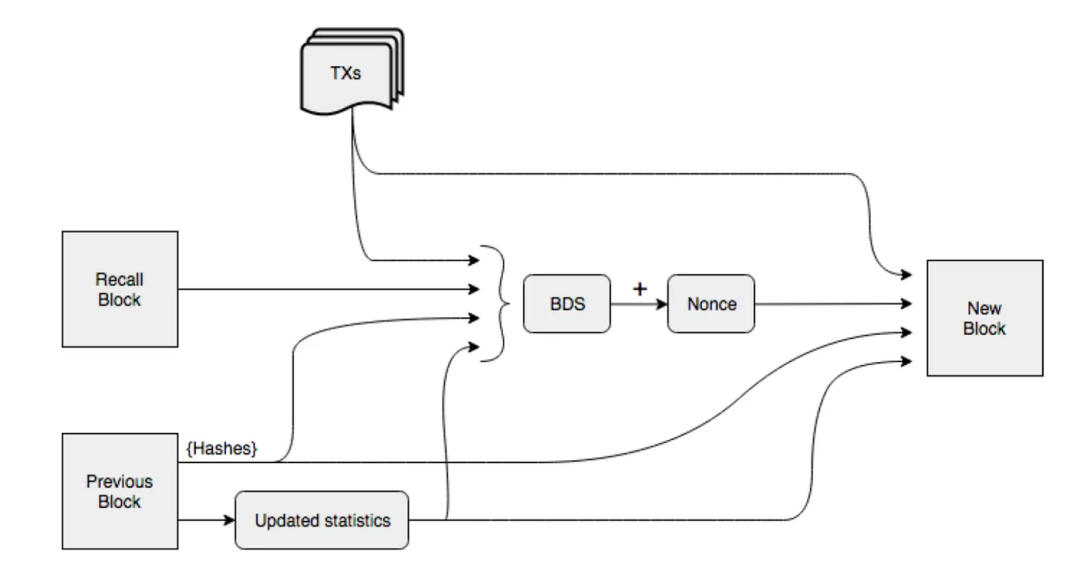
Blockweave is the core data structure of Arweave, which improves the design of traditional blockchain and achieves efficient, reliable, and permanent data storage. The following is a detailed analysis of Blockweave:
3.1.1 Basic Structure
The main difference between Blockweave and traditional blockchain lies in its linking structure. In traditional blockchain, each block is only linked to the previous block, while in Blockweave, each block is linked not only to the previous block (parent block) but also to a historical block (recall block). This dual-link structure increases the redundancy and security of data storage.
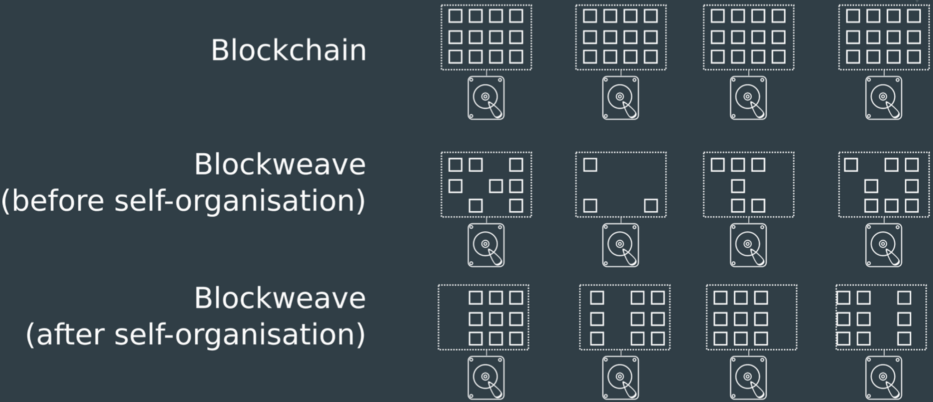
Parent Block: Like traditional blockchain, each block in Blockweave is linked to its immediate previous block, forming a basic chain structure.
Recall Block: Each block is also linked to a randomly selected historical block to increase data redundancy and accessibility.
3.1.2 Data Verification Process
In Blockweave, miners need to verify a randomly selected historical block before generating a new block. This verification mechanism is called Proof of Access (PoA). PoA ensures that all stored data blocks can be accessed and verified. Miners store more historical data blocks to increase data redundancy and their chances of earning mining rewards.
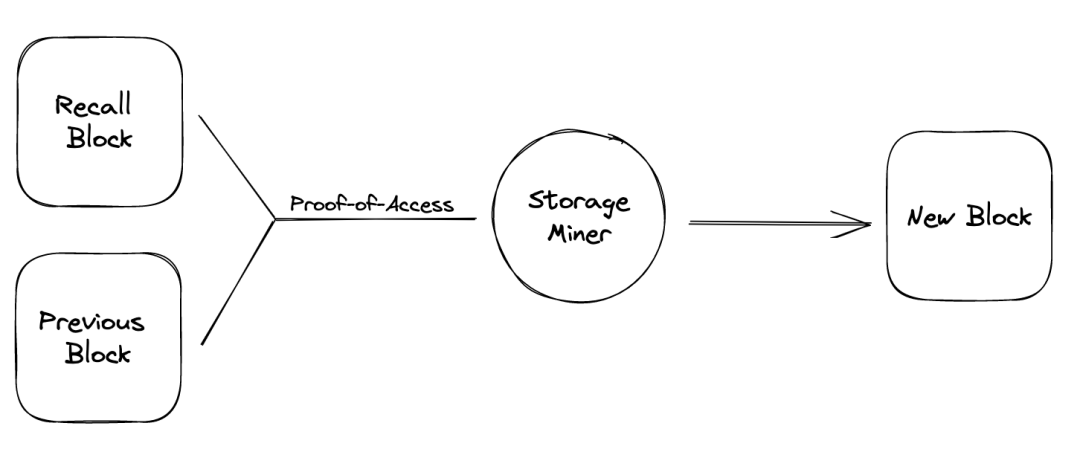
Random Selection: By randomly selecting historical blocks for verification, miners cannot predict the specific data blocks that need to be verified, thus they must store a large amount of historical data.
Data Integrity: This mechanism ensures the integrity and immutability of data, increasing data security.
3.1.3 Redundancy of Data Storage
The dual-link structure of Blockweave significantly increases the redundancy of data. As each block is linked to multiple blocks, even if some nodes fail or lose data, other nodes can still recover data through redundant links. This design enhances data persistence and fault tolerance.
Multiple Links: The dual links of parent blocks and recall blocks provide high data redundancy in the network.
Data Recovery: In the event of node failure or data loss, other nodes can use redundant links to recover data, ensuring high data availability.
3.1.4 Construction and Mining of Blockweave
Miners in the Arweave network earn rewards by generating new blocks. To generate new blocks, miners must be able to access and verify specified historical blocks. This mechanism incentivizes miners to store more historical data, increasing the overall data storage capacity and security of the network.
Mining Process: Miners need to verify randomly selected historical blocks, generate new blocks, and earn AR token rewards.
Incentive Mechanism: This mechanism encourages miners to store more data, increasing data redundancy and network security.
3.1.5 Immutability and Security of Data
Since each block in Blockweave is linked to multiple blocks and verified through the PoA mechanism, once data is stored, it cannot be changed or deleted. This immutability provides high security, preventing malicious tampering or deletion of data.
Immutability: Once data is stored in Blockweave, it cannot be changed or deleted, ensuring data integrity.
Security: The multiple links and random verification mechanism enhance data security, preventing malicious tampering.
3.2 Succinct Proofs of Random Access (Spora)
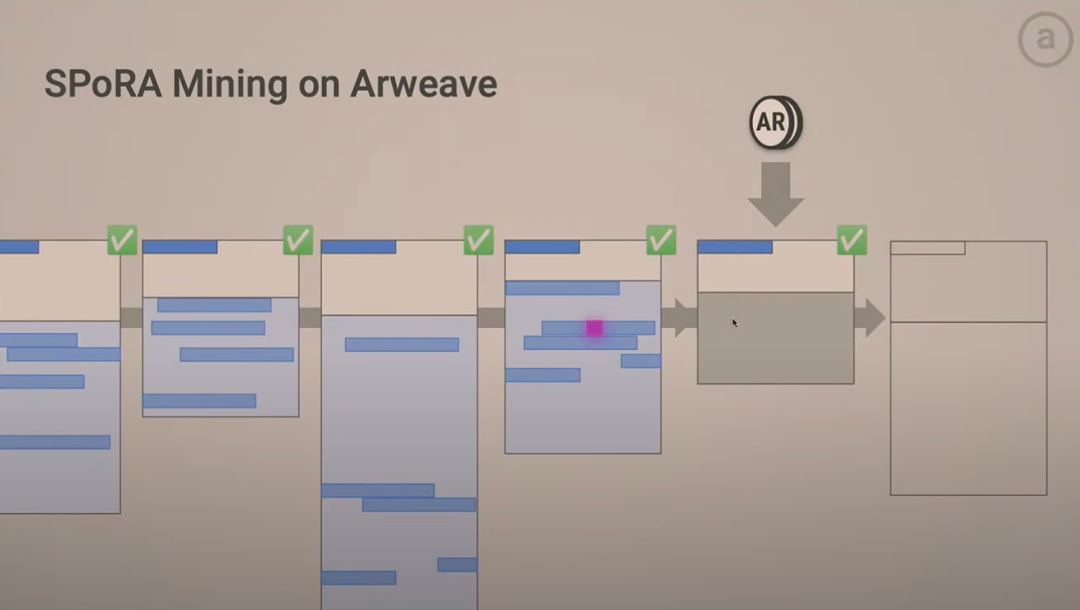
Succinct Proofs of Random Access (Spora) is an important consensus mechanism used by Arweave to improve the efficiency and security of its network. Through Spora, Arweave can enhance data storage and access efficiency while ensuring data integrity and security. The following are key aspects of the detailed analysis of Spora:
3.2.1 Basic Principle
Spora (Succinct Proofs of Random Access) is an improved Proof of Access (PoA) mechanism. Its core idea is to verify new data blocks by randomly selecting historical data blocks, ensuring data integrity and security. This randomness reduces the possibility of miner cheating while increasing network security and data redundancy.
3.2.2 Data Verification Process
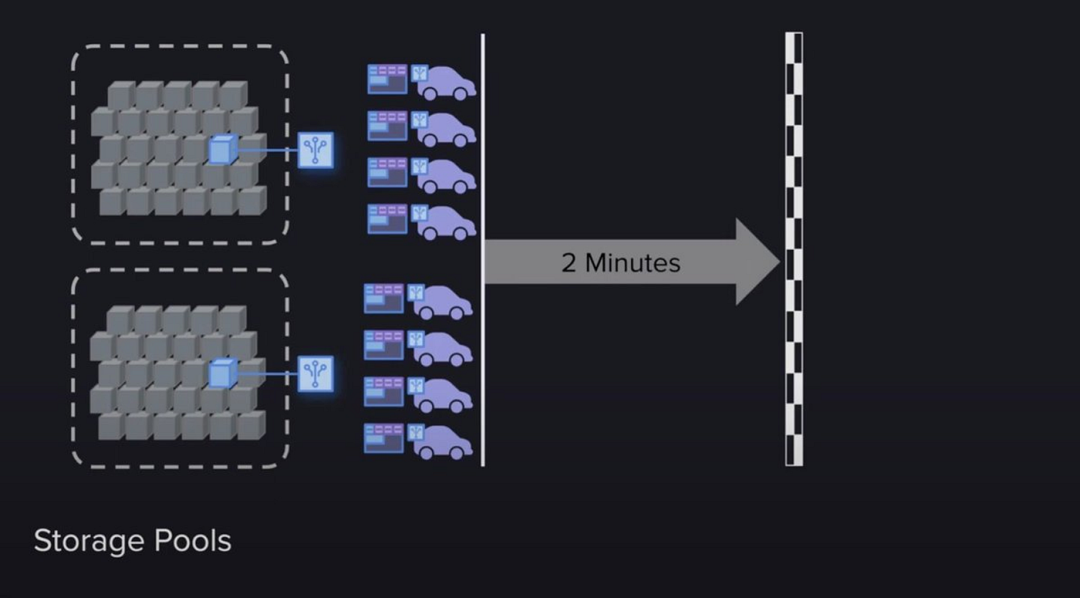
In Spora, miners need to verify a randomly selected historical data block before adding a new block. This random selection process prevents miners from foreseeing the specific data block that needs to be verified, thus preventing selective data storage. In this way, Spora ensures that miners must store a large amount of historical data blocks to increase their mining opportunities, thereby increasing data redundancy and the overall security of the network.
3.2.3 Enhancing Miner Incentives
Spora enhances miner incentive mechanisms. Since miners must store more historical data blocks to increase the probability of successful mining, this prompts them to invest more resources in storing and maintaining data. Miners not only earn mining rewards through verifying and storing data, but also increase their competitiveness in the network by increasing data storage capacity.
3.2.4 Improving Energy Efficiency
Compared to the traditional Proof of Work (PoW) mechanism, Spora is more energy-efficient. PoW requires miners to verify transactions through complex calculations, resulting in significant energy consumption. Spora, on the other hand, reduces the consumption of computational resources through random access and verification of historical data blocks, thereby improving the network's energy efficiency. This efficient verification process not only reduces energy costs but also minimizes environmental impact.
3.2.5 Security and Resistance to Attacks
Spora enhances the security and resistance to attacks of the network through its randomness and data redundancy. Since miners cannot predict the data blocks that need to be verified, it becomes difficult for malicious attackers to conduct targeted attacks. Additionally, the large amount of historical data blocks stored by miners increases the amount of data that attackers would need to disrupt, thereby enhancing the overall security of the network.
3.3 Bundling Technology
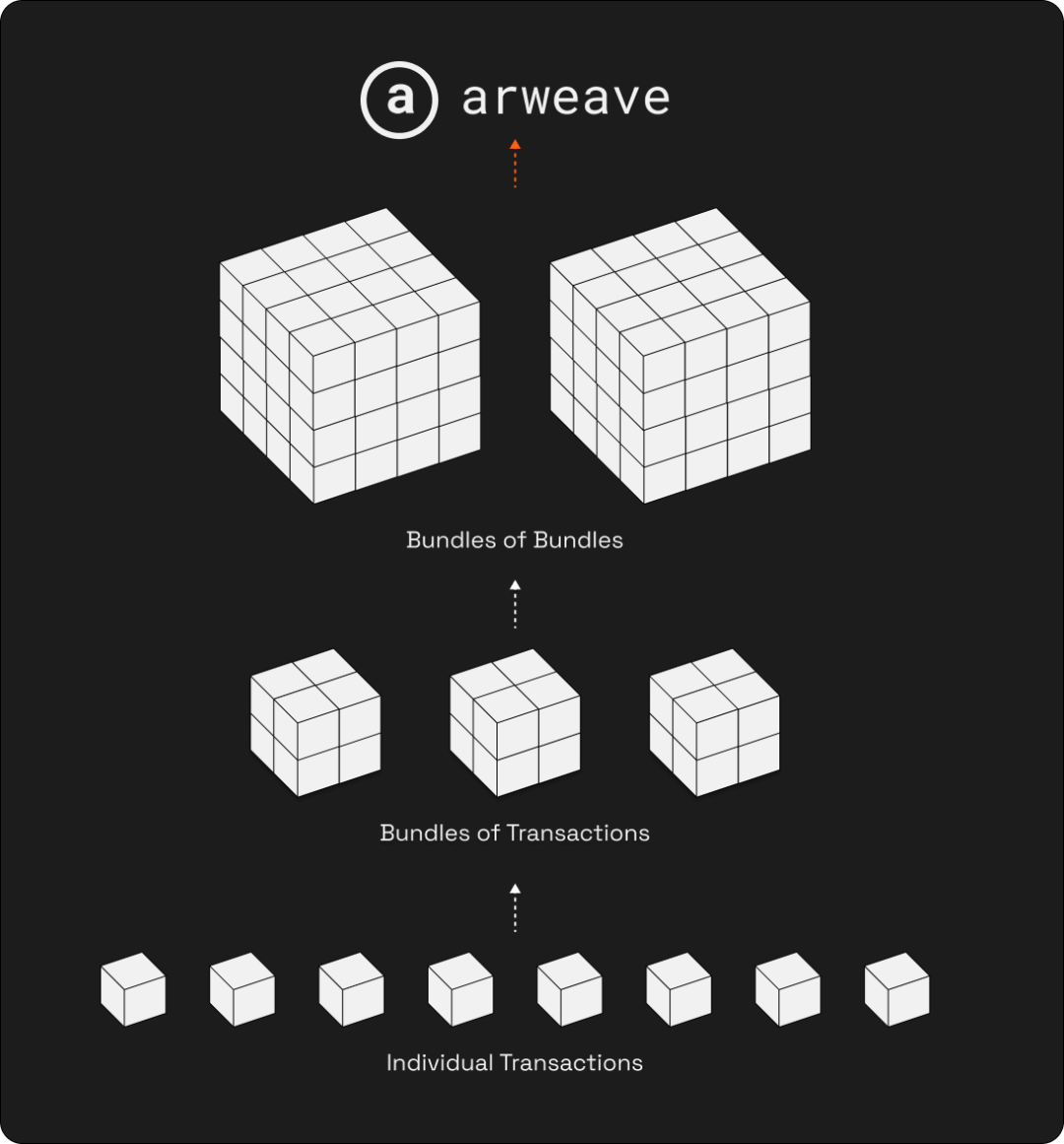
Arweave's Bundling Technology is one of its key innovations for improving data upload efficiency and network scalability. Through this technology, Arweave can effectively handle large-scale data uploads, enhancing user experience and network performance. The following is a detailed analysis of Bundling Technology:
3.3.1 Basic Principle
The core idea of Bundling Technology is to merge multiple small transactions into a large transaction, and then upload this large transaction to Blockweave. This method reduces the frequent upload operations of individual transactions, thereby reducing network congestion and improving data transmission efficiency.
3.3.2 Improvement in Data Upload Efficiency
Without Bundling Technology, each transaction needs to be processed and recorded separately, increasing the burden on the blockchain and leading to inefficiencies in the data upload process. Through Bundling Technology, multiple small transactions are packaged into a large transaction for upload, reducing the number of on-chain transactions and significantly improving data upload efficiency.
3.3.3 Network Scalability
Bundling Technology significantly improves the scalability of the Arweave network. In scenarios involving large-scale data uploads, such as non-fungible token (NFT) projects and media file storage, Bundling Technology can effectively handle a large number of concurrent upload requests, avoiding network congestion and performance bottlenecks. For example, Arweave successfully uploaded 47GB of data in a single bundling operation, which is difficult to achieve in traditional on-chain data storage solutions.
3.3.4 Transaction Certainty and Developer Experience
Through Bundling Technology, developers and users can have a more certain knowledge of the results of data uploads, as the success rate of uploading a large transaction is higher than that of uploading multiple small transactions separately. This certainty improves the developer experience, allowing them to focus more on application development without worrying about the complexity of underlying data storage.
3.3.5 Cost Effectiveness
Bundling Technology not only improves data upload efficiency but also brings significant cost benefits. In traditional on-chain data storage models, each transaction incurs a fee, but Bundling Technology reduces the number of transactions, thereby lowering the overall transaction costs. This is an important advantage for users who need to store large amounts of data.
3.3.6 Data Integrity and Security
Bundling Technology ensures the integrity and security of data. Although multiple transactions are merged into a large transaction, the data of each small transaction remains intact and immutable. This ensures the security and integrity of the data, even in the event of problems during the upload process.
3.4 Wildfire Mechanism
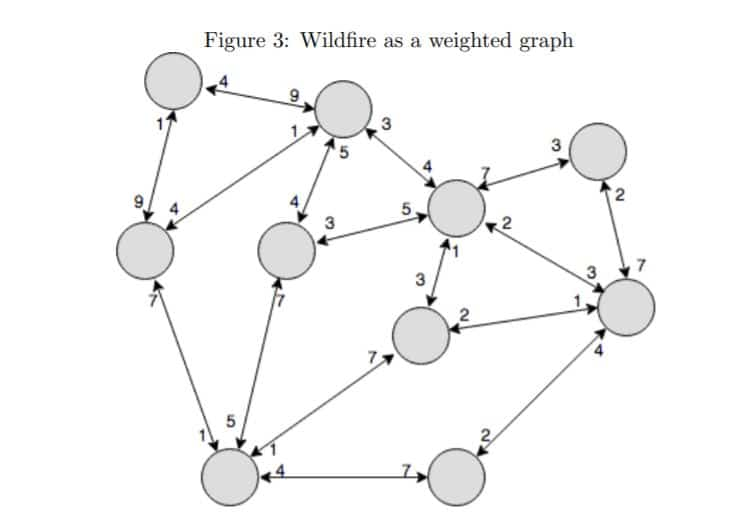
Wildfire is an incentive mechanism in the Arweave network designed to enhance the overall user experience by optimizing data propagation and improving network performance. The following is a detailed analysis of the Wildfire mechanism:
3.4.1 Basic Principle
The Wildfire mechanism incentivizes nodes to respond quickly and fulfill data requests through a ranking system. Nodes are ranked based on their speed and efficiency in propagating data in the network. Nodes with higher rankings receive more requests and rewards, ensuring the rapid distribution of data in the network and improving overall network performance.
3.4.2 Data Propagation Efficiency
The core of the Wildfire mechanism is to improve the efficiency of data propagation. When nodes receive new data in the network, they quickly propagate it to other nodes. Nodes that propagate data quickly and respond promptly gain an advantage in the rankings, thereby receiving more opportunities for request processing and corresponding rewards.
Rapid Propagation: Nodes quickly propagate new data to ensure its rapid flow in the network.
Efficiency Priority: The ranking mechanism encourages nodes to optimize data propagation efficiency, improving overall network performance.
3.4.3 Node Ranking System
The Wildfire mechanism incentivizes nodes to improve data propagation efficiency through a ranking system. Nodes are scored based on their speed and reliability in responding to data requests. Nodes with higher scores have higher priority in the network, receiving more opportunities for request processing and rewards.
Response Speed: The speed at which nodes respond to data requests is a key metric for ranking, with faster response leading to higher rankings.
Data Reliability: The reliability of nodes in providing data is also a critical factor for ranking, with more stable data provision leading to higher rankings.
3.4.4 Incentives and Reward Mechanism
The Wildfire mechanism incentivizes nodes to improve data propagation efficiency by rewarding high-ranking nodes. Nodes that propagate data quickly and reliably receive higher rankings and more rewards. This reward mechanism ensures active participation of nodes in the network, improving overall network performance and data availability.
Ranking Rewards: High-ranking nodes receive more opportunities for request processing and corresponding rewards.
Economic Incentives: Nodes receive economic rewards for providing fast and reliable data propagation services, incentivizing them to continuously optimize performance.
3.4.5 Network Health and Robustness
The Wildfire mechanism not only improves the efficiency of data propagation but also enhances the health and robustness of the network. By incentivizing nodes to respond quickly and propagate data, the Wildfire mechanism ensures the stability and efficient operation of the network under high loads and demand.
High Load Adaptation: Under high loads, the Wildfire mechanism ensures that data can flow rapidly and efficiently in the network.
Enhanced Robustness: By optimizing node performance, the Wildfire mechanism enhances the overall robustness and reliability of the network.
4. AR Token
AR token is the native cryptocurrency of the Arweave network, playing multiple key roles, from incentivizing miners to paying for data storage costs, and maintaining the economic balance of the entire ecosystem.
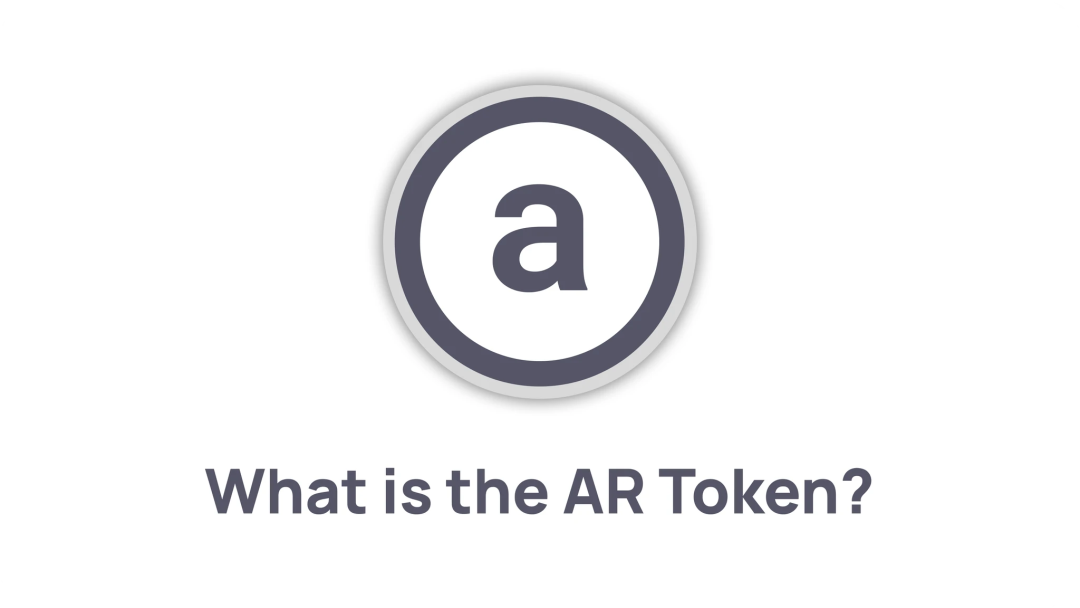
Here is a detailed analysis of the AR token:
4.1 Basic Functions of AR Token
Paying for Data Storage Costs: Users need to use AR tokens to pay one-time storage fees when storing data on the Arweave network. These fees ensure the permanent storage of data.
Incentivizing Miners: Miners earn AR tokens as rewards for storing and verifying data. This mechanism incentivizes miners to actively participate in data storage and maintenance, ensuring the security and reliability of the network.
4.2 One-Time Payment Model
Arweave's business model differs from traditional subscription services, as users only need to pay a one-time fee for permanent data storage. Part of these fees is used to cover the initial storage costs, while the rest goes into the Endowment Fund for future storage costs.
Initial Storage Costs: The fees paid are immediately used to cover the initial storage and access of data.
Endowment Fund: Approximately 86% of the fees go into the Endowment Fund, which is used for long-term incentivization of miners and ensuring data permanence.
4.3 Endowment Fund for Storage
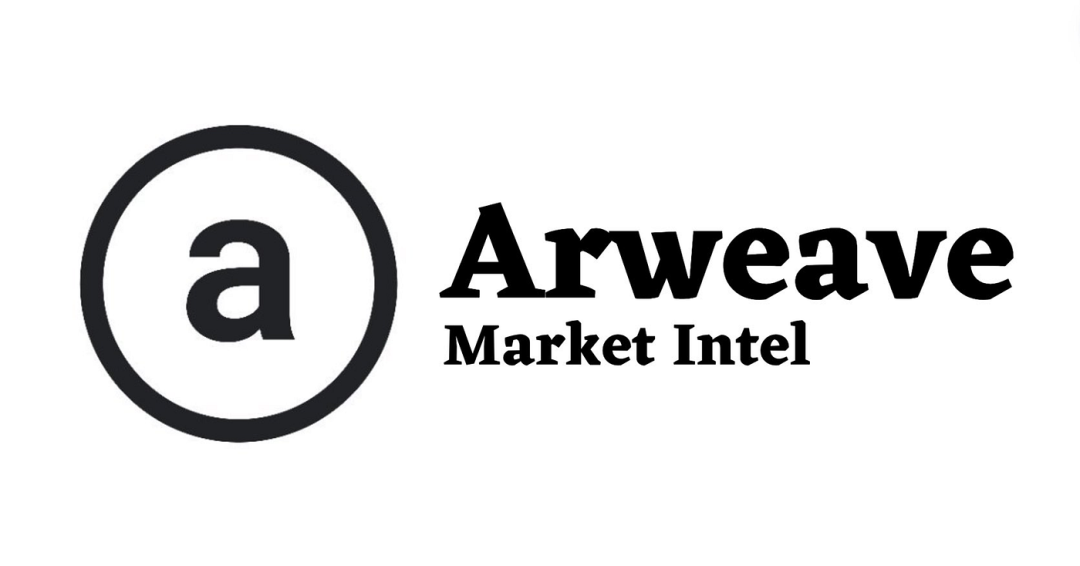
The design of the Endowment Fund is similar to traditional economic donation structures, aiming to pay for future storage costs through interest and appreciation. The interest generated from the initial fees paid by users is used to cover the long-term storage costs of miners, ensuring the permanent preservation of data.
Fund Operation: The accumulated funds and interest in the Endowment Fund ensure continuous economic incentives for miners over the years.
Expected Cost Reduction: As the expected data storage costs continue to decrease, the interest income from the Endowment Fund is sufficient to cover long-term storage costs.
4.4 Token Supply
Initial Supply: 66 million AR tokens.
Circulating Supply: 55 million AR tokens.
Gradual Halving: Similar to the halving mechanism of Bitcoin, ensuring the scarcity and long-term value of the token supply. However, unlike Bitcoin, AR tokens use a gradual halving mechanism, meaning the token issuance will gradually decrease in each small cycle.
4.5 Allocation of AR Tokens
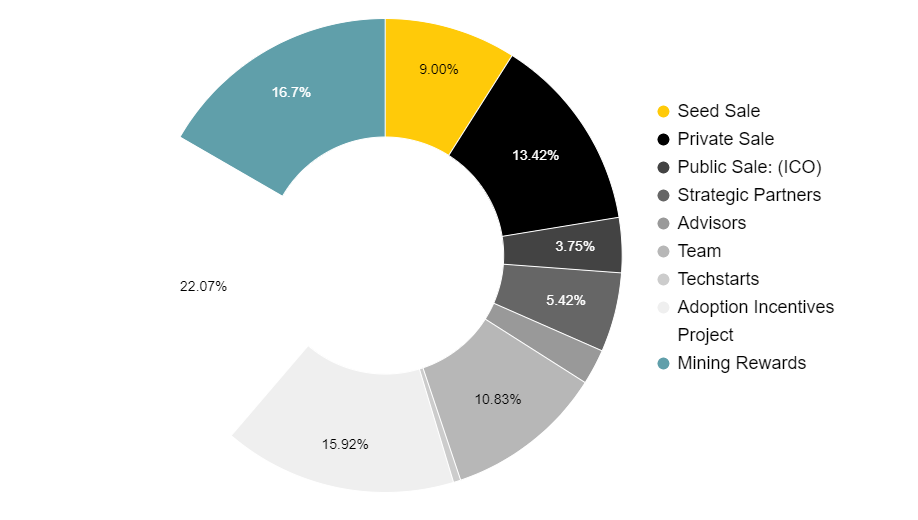
Seed Sale: 9%.
Private Sale: 13.42%.
Public Sale (ICO): 3.75%.
Strategic Partners: 5.42%.
Advisors: 2.42%.
Team: 10.83%.
Tech Startups: 0.5%.
Adoption Incentives: 15.92%.
Project: 22.07%.
Mining Rewards: 16.67%.
4.6 Economic Incentives of the Token
AR tokens incentivize network participants in various ways:
Mining Rewards: Miners earn AR tokens as rewards for storing and verifying data, increasing their participation.
User Payments: Users pay AR tokens to store data, ensuring the permanent preservation of their data.
Profit Sharing: Arweave introduces Profit Sharing Tokens (PST), allowing developers to earn small dividends by building and operating applications, promoting ecosystem development and innovation.
4.7 Market Performance of the Token
The market performance of AR tokens is influenced by various factors, including increasing storage demand, ecosystem development, and market recognition of decentralized storage solutions. The value of AR tokens increases with the growth of the network and increasing user demand.
Market Demand: As the Arweave network grows and user demand increases, the market value of AR tokens also rises.
Ecosystem Development: More developers and projects joining the Arweave ecosystem drive the demand and value growth of AR tokens.
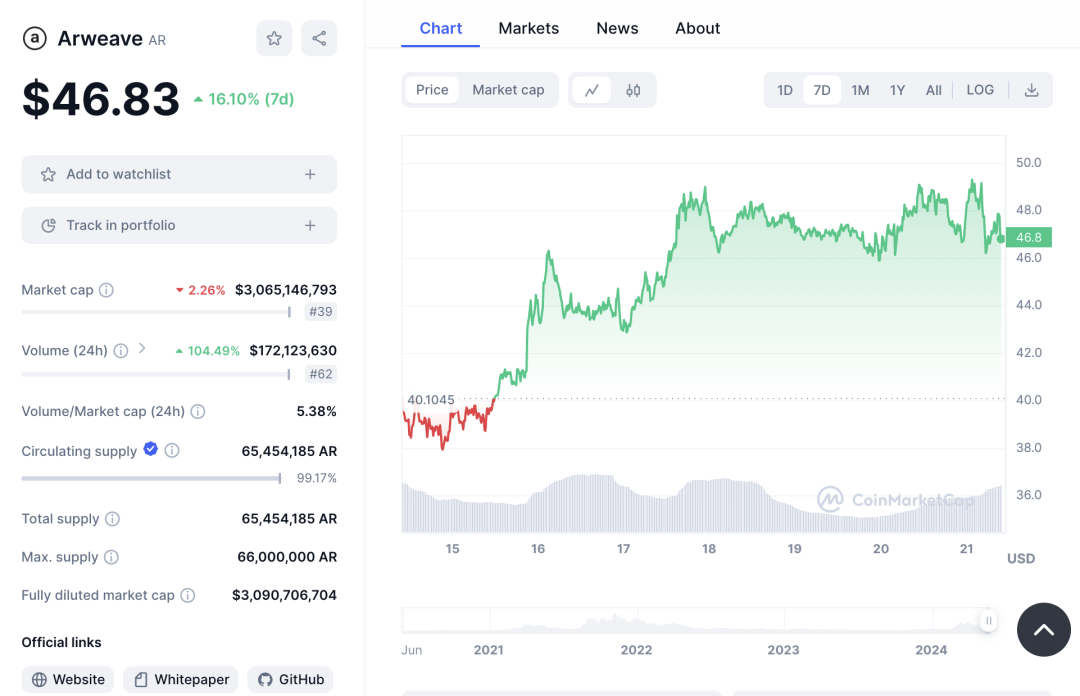
As of now, the market performance of AR tokens is as follows:
Price: $46.83, up 16.10% in the last 7 days.
Market Cap: $3,065,146,793, down 2.26% recently.
24-hour Trading Volume: $172,123,630, up 104.49% recently.
Trading Volume to Market Cap Ratio: 5.38%.
Circulating Supply: 65,454,185 AR, accounting for 99.17% of the total supply.
Fully Diluted Market Value: $3,090,706,704.
5. Team / Partnerships / Funding Situation
5.1 Team

Arweave is a decentralized data storage protocol, and its core team consists of experienced technical experts and industry leaders. Founder and CEO Sam Williams, a graduate of the University of Nottingham, has a deep background in blockchain technology. Chief Operating Officer (COO) Sebastian Campos Groth, a graduate of Georgetown University, previously worked at Techstars and is responsible for the project's daily operations. Legal Director Giti Said, a graduate of the University of Vienna, handles legal affairs. The team also includes several technical and business experts, such as Richard Pardoe, co-founder of Liquity, and Andy Bell, Engineering Director of Movement Labs, who collectively drive the development and innovation of Arweave.
5.2 Partnerships
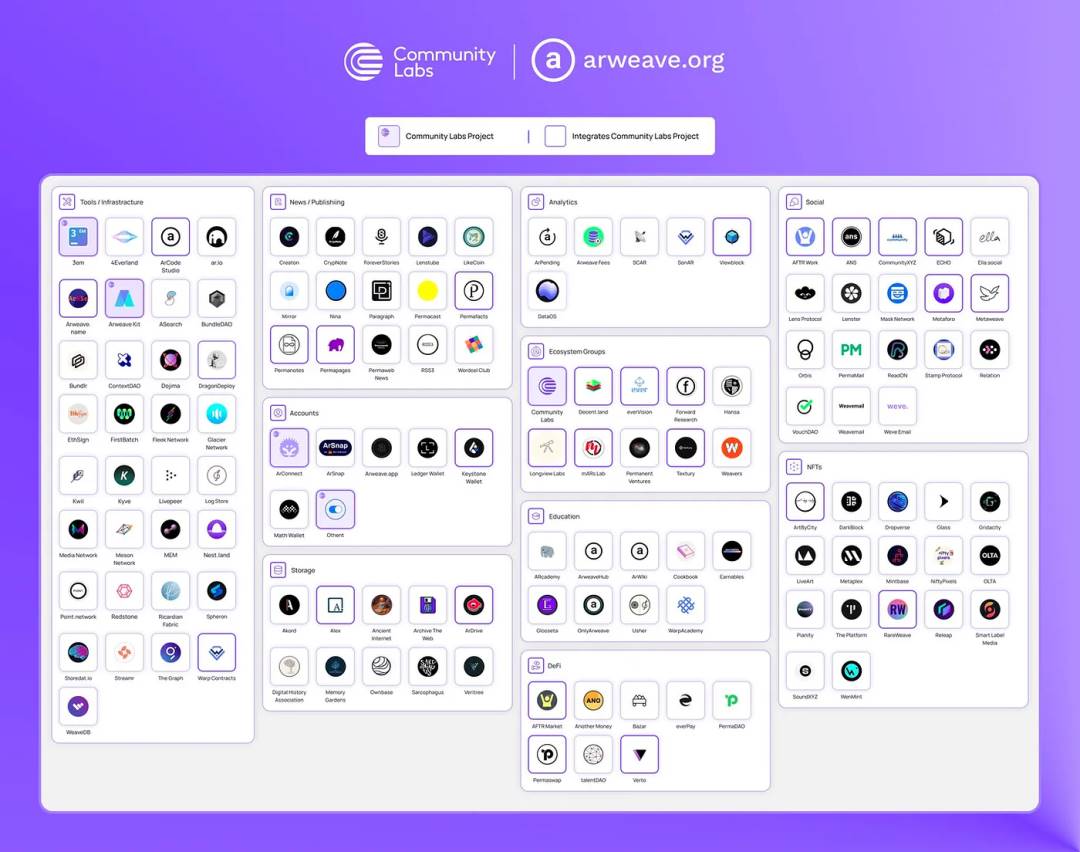
1. KYVE
Overview: KYVE is a blockchain storage middleware built on Arweave, providing a standardized validation and archiving framework.
Partnership Highlights:
KYVE mainnet launch with over 2000 TB of data uploaded.
KYVE has established strategic partnerships with 19 projects and plans to hold community growth activities in 2024.
2. Irys (formerly Bundlr)
Overview: Irys is an extension solution for Arweave, increasing the permanent data throughput of Arweave through transaction bundling.
Partnership Highlights:
In September 2023, Irys completed the processing of 1 billion transactions.
In October 2023, Irys partnered with Solana Mobile to store DApp Store applications.
3. ArDrive
Introduction: ArDrive is a decentralized cloud storage application, similar to a Web3 version of Dropbox or Google Drive.
Partnership Highlights:
In February 2023, ArDrive became fully decentralized and stored on Arweave.
In May 2023, ArDrive 2.0 was launched, adding dark mode, wallet generation, and large file upload features.
5.3 Funding Situation
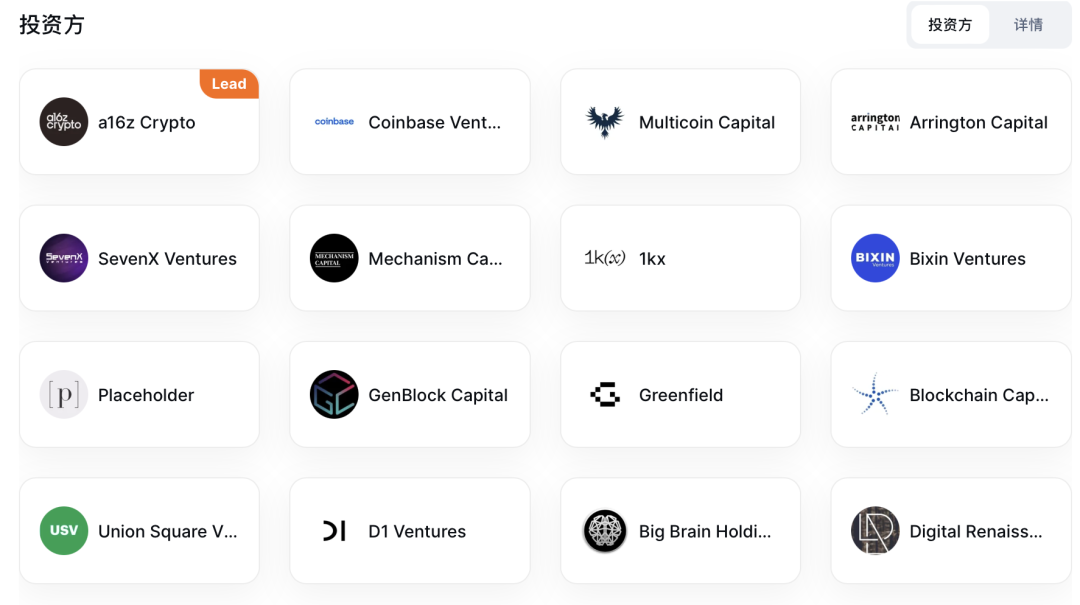
Since its inception, Arweave has successfully raised $37.3 million through multiple rounds of funding, with major investors including Andreessen Horowitz (a16z), Union Square Ventures, Multicoin Capital, Coinbase Ventures, and other well-known institutions. Here are some key funding events:
1. Seed Round
- Time: 2017
- Amount: $5 million
- Major Investors: Andreessen Horowitz (a16z)
2. Private Round
- Time: 2019
- Amount: $8.3 million
- Major Investors: Multicoin Capital, Union Square Ventures, a16z, Coinbase Ventures, Arrington XRP Capital
3. Public Round (ICO)
- Time: 2018
- Amount: $15.7 million
- Details: Conducted a public offering through the initial token offering (ICO), attracting a large number of early investors.
4. Subsequent Funding
- Time: 2020
- Amount: $8.3 million
- Major Investors: Andreessen Horowitz (a16z), Union Square Ventures, Coinbase Ventures
5. Latest Funding
- Time: 2023
- Amount: $8.3 million
- Major Investors: a16z, Coinbase Ventures, Multicoin Capital
6. Project Evaluation
6.1 Market Analysis
Arweave belongs to the decentralized data storage market, and through its innovative Blockweave technology, it achieves permanent data storage. The core goal of the project is to provide an efficient, secure, and scalable data storage solution, ensuring the permanent preservation and immutability of data.
Here are some decentralized data storage projects similar to Arweave:
1. Filecoin
- Overview: Filecoin is a decentralized storage network that utilizes IPFS (InterPlanetary File System) technology and drives storage nodes through economic incentives.
- Core Technology: Proof of Replication and Proof of Spacetime.
- Features: Users pay for storage on demand, supporting large-scale data storage and retrieval.
2. Siacoin
- Overview: Siacoin is a decentralized storage platform that provides secure, low-cost data storage through blockchain technology.
- Core Technology: Smart contracts and storage proofs.
- Features: Users pay Siacoin tokens to rent storage space, offering a low-cost distributed storage solution.
3. Storj
- Overview: Storj is a blockchain-based decentralized cloud storage platform, allowing users to store data through a distributed network.
- Core Technology: Sharding and Distributed Hash Table (DHT).
- Features: Data is encrypted and stored in shards on nodes globally, ensuring data security and privacy.
6.2 Project Advantages
- Permanent Storage: Users only need to pay a one-time fee to store data permanently on Permaweb, without monthly subscription fees.
- Decentralization: Storing data in a decentralized manner reduces the reliance on centralized servers.
- Strong Support: Arweave has received support from prominent investors such as a16z, Coinbase Ventures, and Union Square Ventures.
- Wide Application: Used as the default metadata storage platform for NFT projects like OpenSea and Solana's Metaplex, ensuring the long-term validity of NFT data.
6.3 Shortcomings
1. High Initial Costs
- One-Time Payment: While Arweave's one-time payment model ensures permanent storage, the initial cost may be higher compared to a pay-as-you-go model. This may create financial pressure for some users, especially small businesses or individuals.
- Fee Transparency: The fee structure of one-time payment may not be as transparent as a pay-as-you-go model, requiring users to have a comprehensive understanding of the cost structure before deciding to use Arweave.
2. Lack of Network Effects
- User and Developer Attraction: Despite Arweave's technological advantages, its user and developer ecosystem is still developing and may be less attractive compared to some mature decentralized storage projects.
- Market Awareness: Arweave's market awareness may not be as high as competitors like Filecoin, requiring more market promotion and community building to increase its visibility and user base.
3. Technical and Development Challenges
- Development Complexity: Arweave's Blockweave and other technologies may have a certain level of complexity for developers, requiring them to invest significant learning costs to understand and apply these technologies.
- Technical Bottlenecks: Despite providing an efficient storage solution, Arweave may still face technical bottlenecks when dealing with large-scale data storage and processing, requiring continuous technical improvements and optimizations.
7. Conclusion
As an innovator in the decentralized data storage field, Arweave has achieved permanent data storage and efficient management through its unique Blockweave technology and robust economic incentive mechanism. Its business model of one-time payment and permanent storage not only solves the problems of data loss and high costs in traditional storage systems but also provides a reliable and long-term data storage solution for users. Despite facing some challenges in technology and market promotion, its expanding ecosystem and diverse partnerships have laid a solid foundation. With the continuous growth of blockchain technology and decentralized storage demand, Arweave is poised to become a leader in this field, providing users worldwide with more secure, transparent, and efficient data storage services. Through continuous technological innovation and market expansion, Arweave is steadily progressing towards its goal of becoming a leading provider of decentralized storage solutions globally.
免责声明:本文章仅代表作者个人观点,不代表本平台的立场和观点。本文章仅供信息分享,不构成对任何人的任何投资建议。用户与作者之间的任何争议,与本平台无关。如网页中刊载的文章或图片涉及侵权,请提供相关的权利证明和身份证明发送邮件到support@aicoin.com,本平台相关工作人员将会进行核查。




